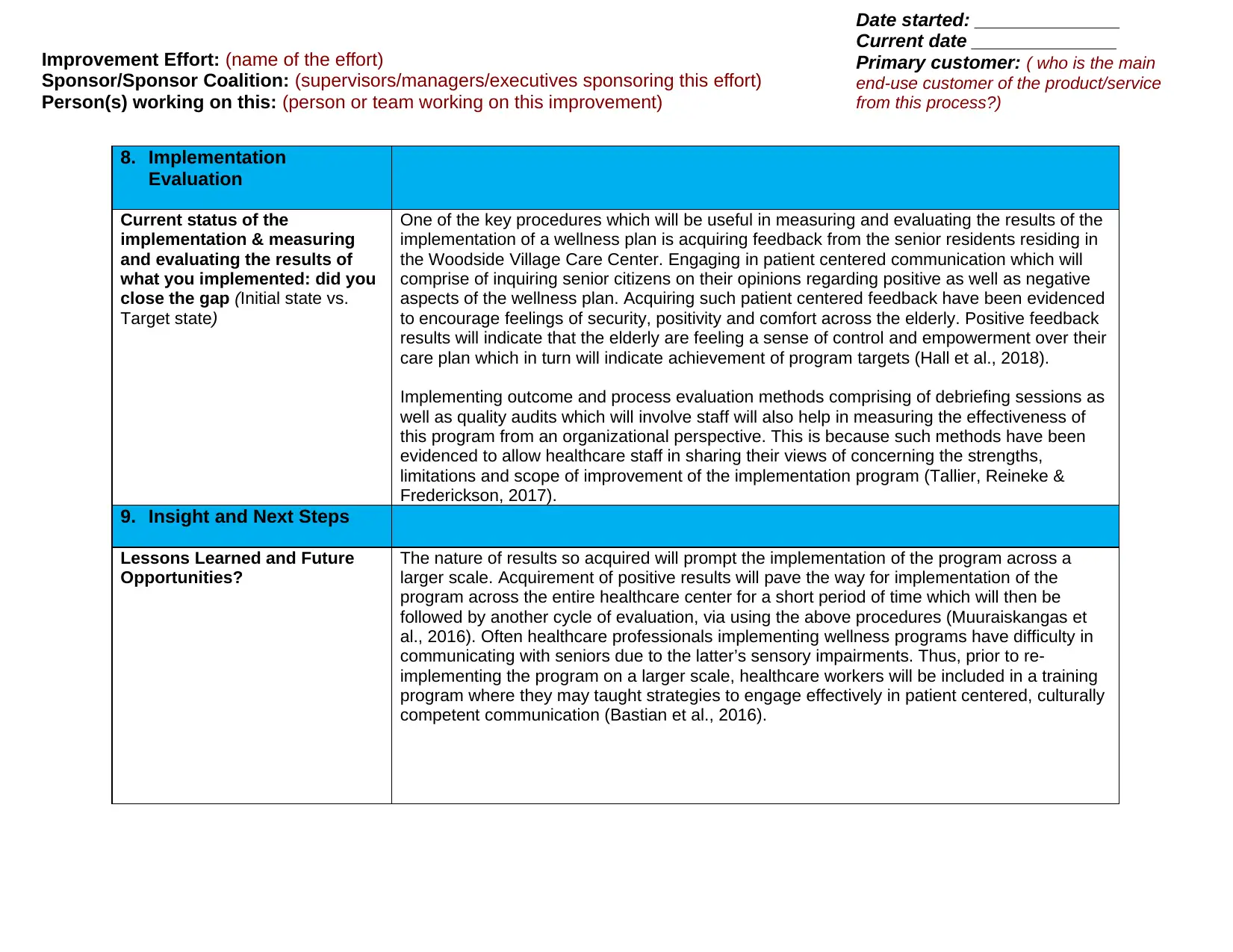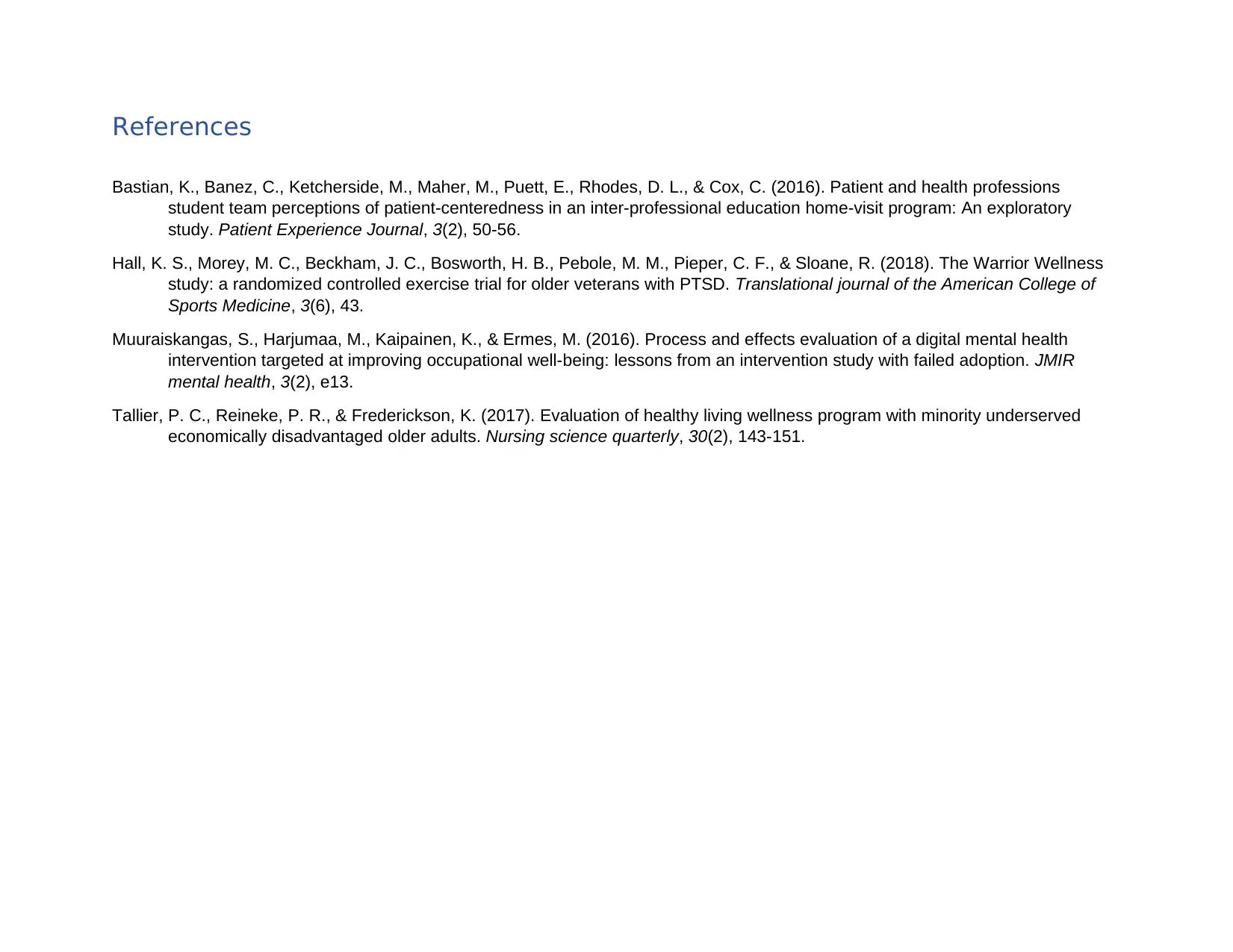Healthcare Improvement: Woodside Village Wellness Program Report
VerifiedAdded on 2022/08/24
|2
|722
|16
Report
AI Summary
This report details the implementation and evaluation of a wellness program at the Woodside Village Care Center. The primary focus is on improving the well-being of senior residents. The report outlines the initial steps, including identifying the primary customer and the improvement effort. It describes the implementation evaluation process, emphasizing the importance of patient-centered communication to gather feedback from senior residents. The evaluation methods include acquiring feedback from residents regarding the wellness plan. Positive feedback is used to indicate that the elderly are feeling a sense of control and empowerment over their care plan. The report also discusses outcome and process evaluation methods, such as debriefing sessions and quality audits involving staff. The results of the evaluation will determine if the program can be expanded. Future steps include healthcare workers receiving training to engage effectively in patient-centered communication. References to supporting research are provided.
1 out of 2







![[object Object]](/_next/static/media/star-bottom.7253800d.svg)